Agro-groups crafting solutions to curb GHG
After success in testing progress, Vietseed Co., Ltd is closely cooperating with the Nha Ho Research Institute for Cotton and Agricultural Development, based in the south-central province of Ninh Thuan, on studying, experimenting, and overcoming the inherent weakness of elephant grass, as well as processing fresh material ready for the mass-production of pellet fuel from elephant grass biomass.
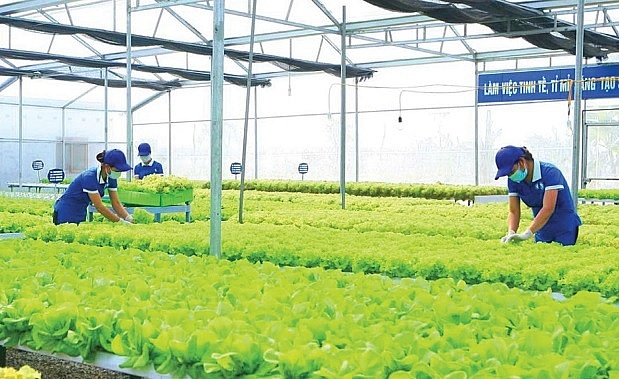 |
| The EU is one of the top four markets for Vietnam’s agro-forestry-fishery exports, Photo: Le Toan |
In addition, based on its long-term orientation, Vietseed has started different programmes such as adopting biotechnology in propagating elephant grass to reduce the cost of new planting and expanding growing areas; collecting and evaluating genetic resources; developing and selecting new elephant grass varieties; and analysing CO2 absorption, aiming at net-zero carbon.
“The company established a team to do all research work from field trial to mechanisation of planting, harvesting, processing and making fuel pellets out of elephant grass,” said Le Dang Hung, deputy director of Vietseed. “Processing pellet fuel from elephant grass biomass will contribute to improving farming productivity and reducing greenhouse gas (GHG) emissions.”
In another case, dairy producer Vinamilk is implementing Green Farm – a model of sustainable dairy farm development that adapts to local natural conditions with regenerative farming techniques.
The model, which has been implemented since last year on three farms in Thanh Hoa, Quang Ngai, and Tay Ninh provinces, is developed through three major pillars, two of which focus on regenerative farming practices and sustainable practices with innovative technologies.
The programme adopts regenerative farming practices to minimise the impact on the environment and communities, such as utilising renewable energy, preserving soil and water resources, and reducing methane.
Meanwhile, sustainable practices with innovative technologies throughout the whole process, from breeding to production, are to ensure product quality, animal welfare, and environmental goals.
The agricultural group has set sustainable development as one of the criteria for development strategies to participate in realising Vietnam’s net-zero commitment by 2050.
Agriculture is not only an industry strongly affected by climate change, but also a huge source of GHGs. Statistics published by the Management Board of Agricultural Projects under the Ministry of Agriculture and Rural Development (MARD) showed that, in Vietnam, the agricultural sector discharges an average of 80 million tonnes of CO2, contributing nearly one-third of total national GHG emissions.
Such emissions in agricultural production are concentrated in the fields of rice cultivation, husbandry and land management, fertiliser usage and land emission management, and burning of plant residues.
“Adopting regenerative farming practices and technology practices are effective solutions to GHG emission reduction because, under these models, the fertility in soils will increase and the water holding capacity is also improved, thereby increasing the natural, biological productivity of the land and encouraging species growth,” said Dinh The Hinh, deputy head of the Agriculture Project Management Board.
“CO2 can be reduced by promoting smart agricultural production, climate-smart agriculture, and good agriculture practices, in addition to replacing inefficient rice land with smart farming systems adaptive to the climate, reducing post-harvest losses and bettering straw management,” Hinh added. “To implement effectively the GHG emission reduction target, it is necessary to have the cooperation of the business community, especially the private sector, because the cost of reducing carbon emissions is too large.”
In Vietnam, many private enterprises have been involved in green and low-carbon agricultural production. For example, the Sustainable Trade Initiative has cooperated with the MARD, local authorities, and domestic and foreign businesses since 2014 to implement the Sustainable Landscape Programme in Central Highlands provinces.
By the end of 2021, more than 10,000ha of agricultural land and 9,000 households have been supported for sustainable production. This has helped reduce the use of chemical fertilisers by 14 per cent and carbon emissions by 60 per cent.
Meanwhile, Nestlé Vietnam is continuing to make efforts to implement projects in the field of regenerative agriculture with the expectation of contributing to the national emissions reduction targets.
Notably, the group integrated regenerative agriculture through its NESCAFÉ Plan with the aim of conserving and restoring farmland, ecosystems, and vital resources including soil, biodiversity, and water, thus benefiting farmers, the environment, and society at large.
These benefits include soil carbon sequestration and plant biomass, the improvement of soil health and fertility, and the reduction of the use of agrochemicals and net GHGs.
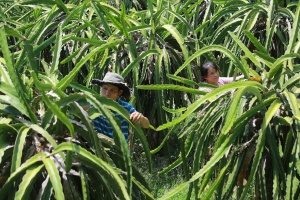 | Agriculture continues to spearhead backbone of economy Minister of Planning and Investment Nguyen Chi Dung emphasised that Vietnam's agricultural sector has seen the strongest development ever, transforming from producing enough food to meet the needs of the people to exporting at a high percentage. |
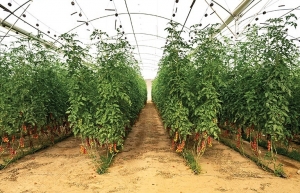 | Organic fertiliser becoming answer for agri-businesses Agricultural businesses are struggling to find solutions to replace fertiliser, with prices continuing to rise. |
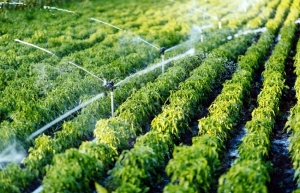 | Agricultural circular model gains traction With Vietnam accelerating the development of a circular economy, many businesses are attempting to apply this model in agriculture – but barriers to approval still stand in the way for some. |
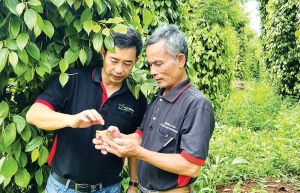 | Regeneration helping to attract investors Abandoning old farming and production methods to switch to new models that limit emissions to the environment, protect natural resources, and promote more sustainable development for both nature and people is becoming more important for modern agricultural enterprises. |
What the stars mean:
★ Poor ★ ★ Promising ★★★ Good ★★★★ Very good ★★★★★ Exceptional
Related Contents
Latest News
More News
- Global partnerships key to Vietnam’s IFC development (December 26, 2025 | 16:18)
- Vingroup pulls out of bid to invest in North-South high-speed railway (December 26, 2025 | 11:42)
- Strengthening supply chains through trade promotions and customs reform (December 24, 2025 | 14:00)
- PM orders investment model for North–South high-speed rail (December 22, 2025 | 17:43)
- LS Eco Energy to invest in Vietnam rare earth sector (December 22, 2025 | 17:31)
- Government moves to establish International Financial Centre (December 21, 2025 | 21:00)
- Vietnam's IFC to target global investment flows (December 21, 2025 | 18:00)
- Two national hospitals expand capacity with new facilities (December 20, 2025 | 09:00)
- Ha Tinh breaks ground on major Vingroup industrial and energy projects (December 19, 2025 | 18:24)
- EVN launches major power infrastructure projects nationwide (December 19, 2025 | 18:17)

 Tag:
Tag:





















 Mobile Version
Mobile Version